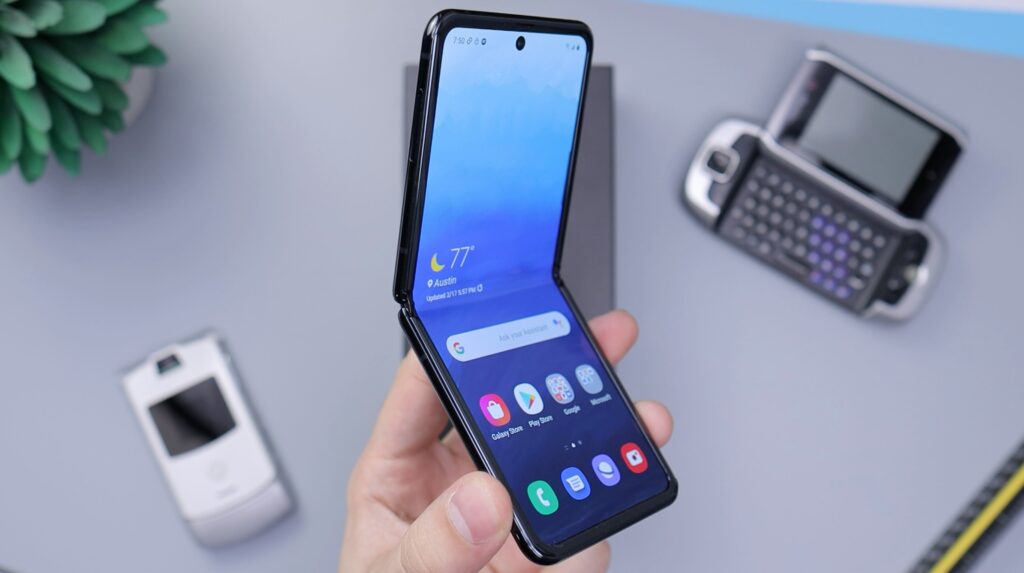From foldable screens to AI-optimized apps, mobile trends in 2025 are evolving at breakneck speed. If you thought last year’s smartphones were impressive, 2025 is already proving to be a watershed moment in mobile innovation. Whether you’re a tech enthusiast, app developer, or business owner, staying on top of these trends is no longer optional—it’s essential.
Staying ahead of mobile trends isn’t just for tech enthusiasts—it’s essential for anyone building apps or brands in 2025.
Here are eight mobile trends shaping the landscape that you absolutely can’t afford to ignore.

1. AI Integration at the Core of Mobile UX
Artificial intelligence is no longer an optional enhancement—it’s embedded into nearly every aspect of mobile usage. From predictive text to personalized app experiences, AI is refining the way we interact with our devices.
Why It Matters: Apps now learn your habits to deliver smarter notifications, prioritize content, and even automate mundane tasks.
Example Use: Google Assistant and Siri now offer hyper-personalized suggestions based on your routines and preferences.
This is one of the most important mobile trends redefining UX today.
2. Foldable and Rollable Displays
The once-novel concept of foldable screens has become a viable, increasingly popular alternative to the standard slab phone. In 2025, rollable displays are also emerging, offering dynamic screen real estate in compact form factors.
Why It Matters: Foldables and rollables are redefining what mobile productivity and media consumption can look like on the go.
Example Use: Devices like the Samsung Galaxy Z Fold and Motorola’s rollable concept phone allow users to multitask like never before.
3. 5G (and Now 6G) Connectivity Taking Over
5G is now mainstream in many parts of the world—but what’s really catching attention is the groundwork being laid for 6G. With latency nearing zero and speeds up to 100x faster than 4G, these connections are transforming how we use mobile devices.
Why It Matters: Faster downloads, seamless video calls, and low-latency gaming are just the start—expect entire industries to evolve around this speed.
Example Use: Real-time augmented reality applications, smart city infrastructure, and remote robotic surgery are no longer just theoretical.
4. AI-Enhanced Mobile Photography
AI cameras now do more than detect faces or adjust exposure—they analyze entire scenes, identify objects, enhance colors, and even remove photobombers.
Why It Matters: Everyone—from influencers to business owners—can produce professional-level content without needing editing skills or fancy equipment.
Example Use: The Google Pixel and iPhone’s computational photography deliver high-quality shots in low-light or action settings with just a tap.
5. App Clips & Mini Apps
Mobile users are increasingly wary of downloading large apps they might use once. Enter mini apps and app clips—lightweight, fast-loading versions of full apps that don’t require installation.
Why It Matters: These are perfect for one-time actions like renting a bike, ordering coffee, or scanning a QR code for tickets.
Example Use: Apple’s App Clips or WeChat mini programs offer seamless transactional experiences without the bloat.
6. Biometric Security Evolving Beyond Fingerprints
Fingerprint and facial recognition are giving way to more sophisticated forms of biometric security, such as voiceprints, iris scanning, and even behavioral biometrics (how you hold or type on your phone).
Why It Matters: With cyber threats on the rise, secure yet user-friendly mobile access is a top priority.
Example Use: Some Android phones now use combined face and voice recognition for multi-factor authentication.
Among this year’s biggest mobile trends, this one impacts security the most.
7. Sustainability-Driven Mobile Manufacturing
Eco-conscious design is no longer a trend—it’s becoming standard. Consumers are demanding greener materials, repairable hardware, and longer-lasting batteries.
Why It Matters: Mobile manufacturers are increasingly accountable for their environmental impact.
Example Use: Fairphone leads the charge with ethically sourced materials, modular components, and repair-friendly design.
8. Extended Reality (XR) Experiences
AR and VR used to be confined to headsets, but mobile devices are catching up fast. With LiDAR sensors and high-resolution displays, smartphones can deliver immersive experiences on the go.
Why It Matters: From gaming to real estate, extended reality is transforming user engagement across industries.
Example Use: IKEA’s app lets users virtually place furniture in their home, and Snapchat’s AR filters are more realistic than ever.
Final Thoughts
Mobile technology is moving faster than ever. In 2025, these eight trends are not just on the horizon—they’re already here, reshaping how we communicate, create, and consume information. Ignoring them means falling behind, whether you’re a user or a brand looking to stay relevant.
These mobile trends are shaping not just the phones we use, but how we live, work, and connect. Expect even faster evolution as 2025 progresses.


Leave a Reply